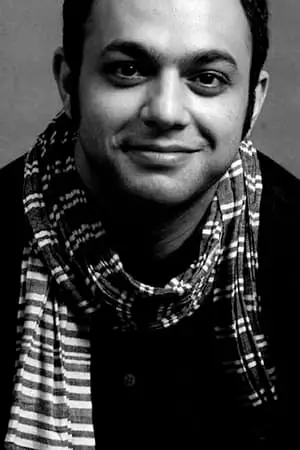Ashghalhaye Doost Dashtani-آشغالهای دوستداشتنی
36.8k views
Description
Ashghalhaye Doost Dashtani : آشغالهای دوستداشتنی : is set against the backdrop of the specific events surrounding the 2009 Iranian elections. The story unfolds in the home of an elderly woman living with her middle-aged cousin, Sima. One day, following the elections, as opposition protests fill the streets of Tehran, a group of demonstrators fleeing security forces takes refuge in the old woman's house. After they leave, the woman notices a mark on her door. Based on the rumors circulating at the time, she is warned that authorities might search her house in the coming days. Concerned, she is advised to remove any suspicious or problematic items from her home to avoid trouble, setting the stage for the unfolding drama. In the elderly woman's home, four framed photos of men hang on the wall. The largest photo is of her husband, a supporter of Mossadegh who encountered trouble during the 1953 coup. Despite initially supporting the monarchy, he later goes on a pilgrimage to Mecca after the revolution, leading to a change in his behavior. The second photo is of her eldest son, who was martyred during the Iran-Iraq War. The third frame belongs to her brother, a member of a communist group who was executed during the political purges of the 1980s. The fourth picture is of her youngest son, a graduate living abroad. The story progresses through an imaginary conversation between the old woman and these four men on a night when she fears the authorities might come for her the next day.
« آشغالهای دوستداشتنی » در پسزمینهٔ رویدادهای خاص مربوط به انتخابات ایران در سال ۲۰۰۹ قرار دارد. داستان در خانهٔ یک زن پیر همراه با دخترخالهاش، سیما، روایت میشود. یک روز پس از انتخابات، زمانی که اعتراضات مخالفتی خیابانهای تهران را پر کرده بود، گروهی از فعالان مخالف که از نیروهای امنیتی فرار کرده بودند، به خانهٔ زن پیر پناه بردهاند. پس از رفتن آنها، زن نشانهای روی در خانهٔ خود مشاهده میکند. با توجه به شایعاتی که در آن زمان در حال گسترش بود، هشدار داده میشود که ممکن است مقامات در روزهای آینده به دنبال تفتیش خانهاش بیایند. نگران، به او پیشنهاد میشود که هرگونه موارد مشکوک یا مشکلسازی را از خانه حذف کند تا از مشکلات جلوگیری کند، توسعه ماجراهای پیشآمده را به راه میاندازد. در خانهٔ زن پیر، چهار عکس از مردان بر روی دیوار آویخته شدهاند. بزرگترین عکس مربوط به شوهرش است که یکی از پشتیبانان مصدق بود که در آمیختگی سال ۱۹۵۳ به مشکل برخورد. با وجود ابتدا حمایت از حکومت سلطنتی، بعدتر به حج در مکه میرود که منجر به تغییر رفتارش میشود. دومین عکس مربوط به پسر بزرگترش است که در جنگ ایران و عراق به شهادت رسید. قاب سوم به برادرش تعلق دارد که عضو گروه کمونیست بود و در زمان پاکسازیهای سیاسی دهه ۸۰ اعدام شد. عکس چهارم مربوط به پسر کوچکترش است که فارغالتحصیل و در خارج زندگی میکند. داستان از طریق یک گفتگوی مجازی بین زن پیر و این چهار مرد در یک شب که او احساس میکند امکان دارد مقامات روز بعد برایش بیایند، پیش میرود.
Actors
Description
Ashghalhaye Doost Dashtani : آشغالهای دوستداشتنی : is set against the backdrop of the specific events surrounding the 2009 Iranian elections. The story unfolds in the home of an elderly woman living with her middle-aged cousin, Sima. One day, following the elections, as opposition protests fill the streets of Tehran, a group of demonstrators fleeing security forces takes refuge in the old woman's house. After they leave, the woman notices a mark on her door. Based on the rumors circulating at the time, she is warned that authorities might search her house in the coming days. Concerned, she is advised to remove any suspicious or problematic items from her home to avoid trouble, setting the stage for the unfolding drama. In the elderly woman's home, four framed photos of men hang on the wall. The largest photo is of her husband, a supporter of Mossadegh who encountered trouble during the 1953 coup. Despite initially supporting the monarchy, he later goes on a pilgrimage to Mecca after the revolution, leading to a change in his behavior. The second photo is of her eldest son, who was martyred during the Iran-Iraq War. The third frame belongs to her brother, a member of a communist group who was executed during the political purges of the 1980s. The fourth picture is of her youngest son, a graduate living abroad. The story progresses through an imaginary conversation between the old woman and these four men on a night when she fears the authorities might come for her the next day.
« آشغالهای دوستداشتنی » در پسزمینهٔ رویدادهای خاص مربوط به انتخابات ایران در سال ۲۰۰۹ قرار دارد. داستان در خانهٔ یک زن پیر همراه با دخترخالهاش، سیما، روایت میشود. یک روز پس از انتخابات، زمانی که اعتراضات مخالفتی خیابانهای تهران را پر کرده بود، گروهی از فعالان مخالف که از نیروهای امنیتی فرار کرده بودند، به خانهٔ زن پیر پناه بردهاند. پس از رفتن آنها، زن نشانهای روی در خانهٔ خود مشاهده میکند. با توجه به شایعاتی که در آن زمان در حال گسترش بود، هشدار داده میشود که ممکن است مقامات در روزهای آینده به دنبال تفتیش خانهاش بیایند. نگران، به او پیشنهاد میشود که هرگونه موارد مشکوک یا مشکلسازی را از خانه حذف کند تا از مشکلات جلوگیری کند، توسعه ماجراهای پیشآمده را به راه میاندازد. در خانهٔ زن پیر، چهار عکس از مردان بر روی دیوار آویخته شدهاند. بزرگترین عکس مربوط به شوهرش است که یکی از پشتیبانان مصدق بود که در آمیختگی سال ۱۹۵۳ به مشکل برخورد. با وجود ابتدا حمایت از حکومت سلطنتی، بعدتر به حج در مکه میرود که منجر به تغییر رفتارش میشود. دومین عکس مربوط به پسر بزرگترش است که در جنگ ایران و عراق به شهادت رسید. قاب سوم به برادرش تعلق دارد که عضو گروه کمونیست بود و در زمان پاکسازیهای سیاسی دهه ۸۰ اعدام شد. عکس چهارم مربوط به پسر کوچکترش است که فارغالتحصیل و در خارج زندگی میکند. داستان از طریق یک گفتگوی مجازی بین زن پیر و این چهار مرد در یک شب که او احساس میکند امکان دارد مقامات روز بعد برایش بیایند، پیش میرود.












